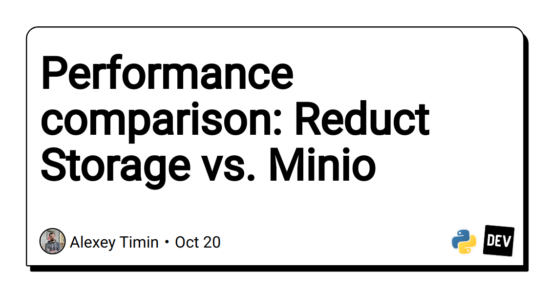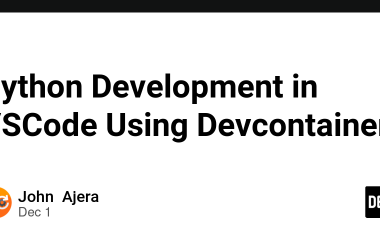We often use blob storage like S3, If we need to store data of different formats and sizes somewhere in the cloud or in our internal storage. Minio is a S3 compatible storage which you can run on your private cloud, bare-metal server or even on an edge device. You can also adapt it to keep historical data as time series of blobs. The most straightforward solution would be to create a folder for each data source and save objects with timestamps in their names:
bucket
|
|---cv_camera
|---1666225094312397.bin
|---1666225094412397.bin
|---1666225094512397.bin
If you need to query data, you should request a list of objects in the cv_camera folder and filter them with names which are in the given time interval.
This approach is simple for implementation, but it has some disadvantages:
- the more objects the folder has, the longer the querying is.
- big overhead for small objects: timestamps as strings and minimal file size is 1Kb or 512 due to the block size of the file system
- FIFO quota, to remove old data when we reach some limit, may not work for intensive write operations.
Reduct Storage aims to solve these issues. It has a strong FIFO quota, an HTTP API for querying data via time intervals, and it composes objects (or records) into blocks for an efficient disk usage and search.
Minio and Reduct Storage have Python SDKs, so we can use them for implementation write and read operations and compare the performance.
Read/Write Data With Minio
For benchmarks, we create two functions to write and read CHUNK_COUNT chunks:
from minio import Minio
import time
minio_client = Minio("127.0.0.1:9000", access_key="minioadmin", secret_key="minioadmin", secure=False)
def write_to_minio():
count = 0
for i in range(CHUNK_COUNT):
count += CHUNK_SIZE
object_name = f"data/{str(int(time.time_ns() / 1000))}.bin"
minio_client.put_object(BUCKET_NAME, object_name, io.BytesIO(CHUNK),
CHUNK_SIZE)
return count # count data to print it in main function
def read_from_minio(t1, t2):
count = 0
t1 = str(int(t1 * 1000_000))
t2 = str(int(t2 * 1000_000))
for obj in minio_client.list_objects("test", prefix="data/"):
if t1 <= obj.object_name[5:-4] <= t2:
resp = minio_client.get_object("test", obj.object_name)
count += len(resp.read())
return count
You can that minio_client doesn’t provide any API query data with patterns, so we have to browse the whole folder on the client side to find the needed object. If you have billions of objects, it stops working. You should store object paths in some time series database or create a hierarchy of folders, e.g., create a folder per day.
Read/Write Data With Reduct Storage
With Reduct Storage this is a way easier:
from reduct import Client as ReductClient
reduct_client = ReductClient("http://127.0.0.1:8383")
async def write_to_reduct():
count = 0
bucket = await reduct_client.create_bucket("test", exist_ok=True)
for i in range(CHUNK_COUNT):
await bucket.write("data", CHUNK)
count += CHUNK_SIZE
return count
async def read_from_reduct(t1, t2):
count = 0
bucket = await reduct_client.get_bucket("test")
async for rec in bucket.query("data", int(t1 * 1000000), int(t2 * 1000000)):
count += len(await rec.read_all())
return count
Benchmarks
When we have the write/read functions, we can finally write our benchmarks:
import io
import random
import time
import asyncio
from minio import Minio
from reduct import Client as ReductClient
CHUNK_SIZE = 100000
CHUNK_COUNT = 10000
BUCKET_NAME = "test"
CHUNK = random.randbytes(CHUNK_SIZE)
minio_client = Minio("127.0.0.1:9000", access_key="minioadmin", secret_key="minioadmin", secure=False)
reduct_client = ReductClient("http://127.0.0.1:8383")
# Our function were here..
if __name__ == "__main__":
print(f"Chunk size={CHUNK_SIZE/1000_000} Mb, count={CHUNK_COUNT}")
ts = time.time()
size = write_to_minio()
print(f"Write {size / 1000_000} Mb to Minio: {time.time() - ts} s")
ts_read = time.time()
size = read_from_minio(ts, time.time())
print(f"Read {size / 1000_000} Mb from Minio: {time.time() - ts_read} s")
loop = asyncio.new_event_loop();
ts = time.time()
size = loop.run_until_complete(write_to_reduct())
print(f"Write {size / 1000_000} Mb to Reduct Storage: {time.time() - ts} s")
ts_read = time.time()
size = loop.run_until_complete(read_from_reduct(ts, time.time()))
print(f"Read {size / 1000_000} Mb from Reduct Storage: {time.time() - ts_read} s")
For testings, we need to run the databases. It is easy to do with docker-compose:
services:
reduct-storage:
image: reductstorage/engine:v1.0.1
volumes:
- ./reduct-data:/data
ports:
- 8383:8383
minio:
image: minio/minio
volumes:
- ./minio-data:/data
command: minio server /data --console-address :9002
ports:
- 9000:9000
- 9002:9002
Run the docker compose configuration and the benchmarks:
docker-compose up -d
python3 main.py
Results
The script print the results for given CHUNK_SIZE and CHUNK_COUNT. On my device, I got the following numbers:
| Chunk | Operation | Minio | Reduct Storage |
|---|---|---|---|
| 10.0 Mb (100 requests) | Write | 8.69 s | 0.53 s |
| Read | 1.19 s | 0.57 s | |
| 1.0 Mb (1000 requests) | Write | 12.66 s | 1.30 s |
| Read | 2.04 s | 1.38 s | |
| .1 Mb (10000 requests) | Write | 61.86 s | 13.73 s |
| Read | 9.39 s | 15.02 s |
As you can see, Reduct Storage is always faster for write operations (16 times for 10 Mb blobs!!!) and a bit slower for reading when we have many small objects. You may notice that the speed decreasing for both databases when we reduce the size of chunks. This can be explained with HTTP overhead because we spend a dedicated HTTP request for each write or read operation.
Conclusions
Reduct Storage could be a good option for applications where you should store blobs historically with timestamps and write data all the time. It has a strong FIFO quota to avoid problems with disk space, and it is very fast for intensive write operations.
References:





